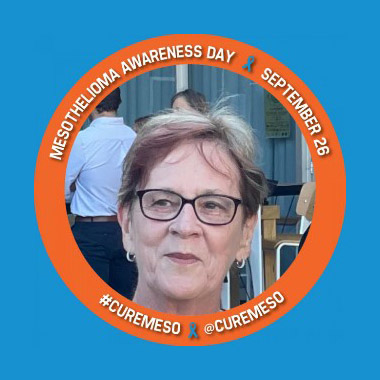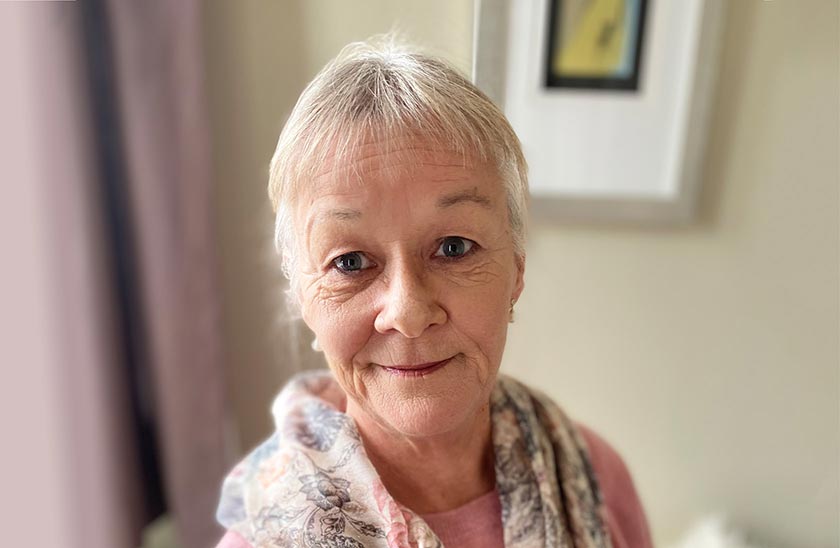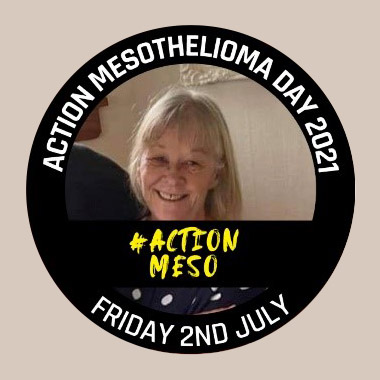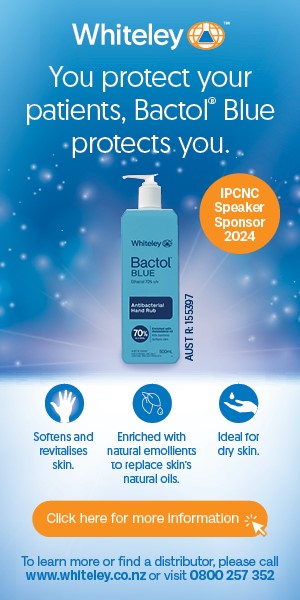Lurking behind the walls, ceilings and floors of our older hospitals, in the lift shafts and pipe lagging, lies asbestos – an unseen killer responsible for the cancer, mesothelioma.
In 2020, we were both diagnosed with mesothelioma.
- Both of us have had long nursing careers and were working in district health board hospitals.
- Both of us have had ACC claims accepted for accidental workplace exposure to asbestos.
- Both of us want to raise awareness of the risk to the many nurses working in older hospitals where asbestos is disturbed during remodelling, repairs or demolition.
Mesothelioma
Mesothelioma is a rare and aggressive form of cancer caused by asbestos. It affects the cells that make up the mesothelium, the lining that covers and protects various internal organs of the body. Mesothelioma most commonly occurs in the lining of the lungs or the abdomen.
It is a terminal disease with a poor prognosis and is much more common in males and tradespeople. This disease has a long latency period after inhaling or ingesting asbestos, so it can be difficult to get a diagnosis and often presents in advanced stages. Mesothelioma has limited treatment options.
It has been described as a cruel, hideous, unlucky, devastating and – sadly – terminal disease.
A message from Leonie Metcalfe and Donna Thomas
We have both been NZNO delegates for many years. As our last advocating act for nurses, we want to warn you about asbestos.
Asbestos is in public hospitals built or renovated between the 1930s and 1980s. If it is disturbed, the fibres are released into the air. If you inhale or swallow them, you are at risk of getting mesothelioma.
Fortunately, most people who are exposed will not go on to develop mesothelioma… but some will. Be aware of the dangers, be wary of old hospital buildings being remodelled, BEWARE – there is no safe amount of asbestos exposure when it comes to mesothelioma.
Mesothelioma may not be curable, but it is the most preventable cancer, because the cause is known – ASBESTOS.
Leonie’s story
I am a nurse with 50 years’ nursing experience, a wife, and a very proud mum and nana. Life was really busy. I was working full-time and held positions on regional and national nursing committees – I was national chair of NZNO’s Enrolled Nurse Section from 2014-2018. I had been doing lots of overseas travel and was feeling fit and healthy.
On July 29, 2020, I was admitted to Waikato Hospital for investigations after casually mentioning to my GP that I had noticed some increasing shortness of breath over the previous four months and a cough that I’d seemed to have had forever.
Thanks to my GP for quick intervention, I was admitted to hospital within five hours.
Initial investigations showed a large pleural effusion, which resulted in having four litres of fluid drained from my right lung. A CT scan showed a diffuse nodular right pleural thickening in keeping with malignant mesothelioma, confirmed by a pleural biopsy.
I had stage 3b pleural mesothelioma, which I knew nothing about. I was told it wasn’t very common in females, had a poor prognosis, and my only treatment option was palliative chemotherapy. Currently immunotherapy treatment is not approved for mesothelioma in New Zealand, but can be self-funded at a huge cost, making it prohibitive for the majority of patients. This was a devastating diagnosis for me and my family. With a scary journey ahead, I’m very thankful for my amazing family and friends walking this road with me.
 I started chemotherapy in September 2020 and had my last dose on December 24. I felt really unwell in my later chemo treatment, with trips to the emergency department for sepsis screening and blood transfusions, as well as further fluid drainage from my lung. I am currently in remission, and retired from work in March to spend good quality time with family and friends and to help raise awareness of this silent killer.
I started chemotherapy in September 2020 and had my last dose on December 24. I felt really unwell in my later chemo treatment, with trips to the emergency department for sepsis screening and blood transfusions, as well as further fluid drainage from my lung. I am currently in remission, and retired from work in March to spend good quality time with family and friends and to help raise awareness of this silent killer.
Following my diagnosis, I lodged an ACC claim, as almost all mesothelioma is caused by exposure to asbestos. I was told that if I was male and in a trade where there was possible exposure to asbestos in the workplace, my ACC claim would have been accepted. As a female in employment not usually associated with asbestos exposure, I was expected to prove where and when I could have been exposed to asbestos. I had had no known asbestos exposure and no family members had been in occupations with a “high risk” of asbestos exposure.
I have only ever had two employers, both DHBs, and can remember working when building alterations were undertaken while hospital staff and patients remained on site. While I was able to provide my work history, I was unable to provide any particular instances/dates to pinpoint asbestos exposure. During information-gathering, my family and I had conversations with anyone who cared to listen, such as engineers, asbestos-removal experts, and workplace health and safety. We also accessed some DHB asbestos management plans and policies.
I continued to challenge ACC decisions, detailing my work history and instances when renovations were undertaken in the hospital buildings…
I was constantly reminded that due to the nature of my occupation as a nurse, the risk of asbestos exposure in the workplace was deemed very low risk. ACC continued to argue insufficient evidence of work-related asbestos exposure to accept my claim. I continued to challenge ACC decisions, detailing my work history. This included instances when renovations were undertaken in the hospital buildings, where asbestos was never discussed, no protective precautions were taken or offered to nursing staff.
My ACC claim was finally accepted in October 2020 as work-related occupational exposure to asbestos.
I was told there were no mesothelioma support groups in our area, because the disease has such a poor prognosis, people didn’t want to waste precious time setting them up. This has motivated us to work on setting up a national group.
Donna’s story

Last October I was told I had mesothelioma, and my world tipped up. It tipped me into a hole I can’t find a way out of and dragged my family into a place of sadness and worry. Before that, I was a 61-year-old nurse who loved her work but was starting to look forward to retirement.
Now I’ll never get my super. Now I’m a patient.
I had not been right for a few years. I had been having chest pains and noticed I couldn’t keep up with others when walking down hospital corridors. I had daily sweats and ran low-grade fevers, but nothing was found on tests. My abdomen felt tight. I had severe reflux and I had changed shape – was this just old age? Occasional abdominal pains would make me lie down. I had a CT scan and gastroscopy, but apart from a hiatus hernia and oesophagitis, nothing was found.
 I carried on working, but went from the emergency department to a more sedentary role in community, as I was just too exhausted to keep up. In February 2020, I woke with severe spasms of coughing – this turned into a chest infection, and I was treated with antibiotics, but never came right. I continued to have chest pains and a dry cough. I would cough and cough until sometimes I vomited.
I carried on working, but went from the emergency department to a more sedentary role in community, as I was just too exhausted to keep up. In February 2020, I woke with severe spasms of coughing – this turned into a chest infection, and I was treated with antibiotics, but never came right. I continued to have chest pains and a dry cough. I would cough and cough until sometimes I vomited.
If I lay down, I was breathless. If I carried anything, I was breathless. If I bent over, I would cough. I went to the doctor and was swabbed, as it was COVID times, and was given inhalers. I had a respiratory function test that showed I had 64 per cent of expected function in a restrictive pattern. But because I was a smoker, it was thought I had chronic bronchitis – I have a drawer full of inhalers that didn’t help.
Eventually, in September last year, I was found to have a dullness in my right lung. An x-ray showed a large pleural effusion and atelectasis. When all the results from pleural fluid cytology and immunohistology, and scans came through, it was decided I had right pleural mesothelioma, with nodules in my peritoneum as well. The outlook was bleak. I was terminally ill.
How could this happen to me?
Hospital renovations
I remember I had gone on to the asbestos exposure register 20 years ago, because of renovations being done at the hospital I worked at. I had been working in the surgical ward when renovations were done to join the ward to the theatre suites. Staff had continued to walk through the building site daily, taking our patients back and forth to theatre and recovery.
There were no signs up, no plastic sheeting to seal off the dust. At one stage we had to steer the beds along a black sticky mat to avoid tracking it into the theatres or back into the ward.
The future: Information, support and funding
- Both Leonie Metcalfe and Donna Thomas want ACC to automatically provide compensation, following a diagnosis of mesothelioma.
- They also want ACC and Pharmac to fund immunotherapy for mesothelioma sufferers, in line with advances in international treatments.
- They are working with other interested people to set up a mesothelimonia support group in New Zealand which would provide links to important information and advice on navigating the ACC system.
- For more information on New Zealand mesothelioma patients and ACC, see also Stuff article featuring video of Leonie.
- Mesothelioma Awareness Day is September 26. It was started in the United States in 2004.
It was several months before we were told that asbestos was found in the fabric of the building that was being renovated. I didn’t know about mesothelioma then. I didn’t know that for some people, breathing in or swallowing even small amounts of that dust was deadly – and that 20 years later I would develop this terminal cancer.
This news was devastating – mainly because there didn’t seem to be any way to fight back. It was incurable. I was offered palliative chemotherapy, which might increase my survival by a few months, or best supportive care. I struggled to believe there was no Hope. I took up the offer of chemotherapy, but life became a misery, and it was stopped after three cycles. During this time, the pleural effusions kept reaccumulating and I had four chest drains, the last one left in permanently.
I went hunting for information, research, new therapies, support groups, to find what was happening with mesothelioma in the rest of the world. I didn’t find a cure, but people were living longer by having more treatment overseas: repeated chemotherapy, immunotherapy, going on trials. Immunotherapy has been approved and is funded by the National Health Service in Britain, and in Australia the Pharmaceutical Benefits Scheme has just fast-tracked funding of immunotherapy for mesothelioma.
In New Zealand, immunotherapy is only available to those who can pay via the private system. This is not equity. My oncologist requested immunotherapy for me from Pharmac and ACC, but both were declined. I am in the process of seeking a review with ACC. I am scrabbling at the walls of this hole I’m in, fighting for my life.
My life has changed. One of the things I miss is nursing – I miss being on the inside of the health system. But from the outside, as a patient, I would like to say KINDNESS is the most valued care, along with honesty and advocacy. If you can do these three, you can be proud to be a nurse.
I want to say thank you to all those who have looked after me along the way, especially Rita, who is always there for me, and Mary, who is still fighting my corner and has not consigned me to the bin. Thanks to all my friends and colleagues for their support and for their hugs when I go into hospital – it must be hard for you.
But special thanks to Leonie, my dear meso buddy, who has held my hand through all this horror. Because of you, I am not alone. (Wish you didn’t have it, though.)




